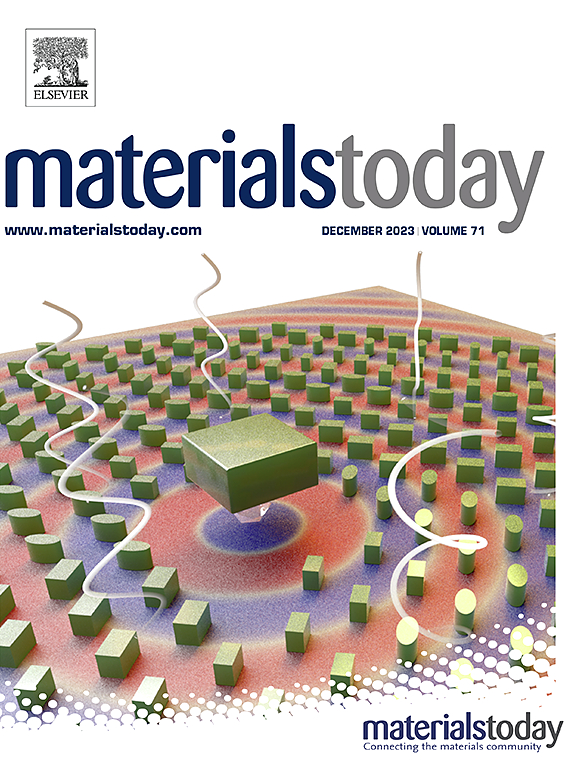Biofabrication of engineered tissues by 3D bioprinting of tissue specific high cell-density bioinks
IF 21.1
1区 材料科学
Q1 MATERIALS SCIENCE, MULTIDISCIPLINARY
引用次数: 0
Abstract
Bioprinting of high cell-density bioinks is a promising technique for cellular condensation-based tissue engineering and regeneration medicine. However, it is still difficult to create precisely controlled complex structures and organization of tissues with high cell-density bioink-based bioprinting for tissue specific condensation. In this study, we present newly biofabricated tissues from directly assembled, tissue specific, high cell-density bioinks which have been three-dimensionally printed into a photocrosslinkable and biodegradable hydrogel microparticle supporting bath. Three types of tissue specific high cell-density bioinks have been prepared with individual stem cells or stem cell aggregates by incorporation of growth factor-loaded gelatin microparticles. The bioprinted tissue specific high cell-density bioinks in the photocrosslinked microgel supporting bath condense together and differentiate down tissue-specific lineages to form multi-phase tissues (e.g., osteochondral tissues). By changing the growth factors and cell types, these tissue specific high cell-density bioinks enable engineering of various functional tissues with controlled architecture and organization of cells.
组织特异性高细胞密度生物墨水的3D生物打印工程组织的生物制造
高密度生物墨水生物打印技术是一种很有前途的基于细胞凝聚的组织工程和再生医学技术。然而,利用高细胞密度的生物墨水基生物打印技术实现组织特异性缩合,仍然难以精确控制组织的复杂结构和组织。在这项研究中,我们展示了由直接组装的、组织特异性的、高细胞密度的生物墨水制成的新生物制造组织,这些生物墨水已被三维打印成光交联的、可生物降解的水凝胶微粒支撑浴。三种类型的组织特异性高细胞密度的生物墨水已制备与个体干细胞或干细胞聚集体通过纳入生长因子负载的明胶微粒。在光交联微凝胶支撑液中,生物打印的组织特异性高细胞密度生物墨水凝聚在一起,并分化成组织特异性谱系,形成多相组织(例如,骨软骨组织)。通过改变生长因子和细胞类型,这些组织特异性高细胞密度生物墨水能够在控制细胞结构和组织的情况下实现各种功能组织的工程。
本文章由计算机程序翻译,如有差异,请以英文原文为准。
求助全文
约1分钟内获得全文
求助全文
来源期刊

Materials Today
工程技术-材料科学:综合
CiteScore
36.30
自引率
1.20%
发文量
237
审稿时长
23 days
期刊介绍:
Materials Today is the leading journal in the Materials Today family, focusing on the latest and most impactful work in the materials science community. With a reputation for excellence in news and reviews, the journal has now expanded its coverage to include original research and aims to be at the forefront of the field.
We welcome comprehensive articles, short communications, and review articles from established leaders in the rapidly evolving fields of materials science and related disciplines. We strive to provide authors with rigorous peer review, fast publication, and maximum exposure for their work. While we only accept the most significant manuscripts, our speedy evaluation process ensures that there are no unnecessary publication delays.
 求助内容:
求助内容: 应助结果提醒方式:
应助结果提醒方式:


